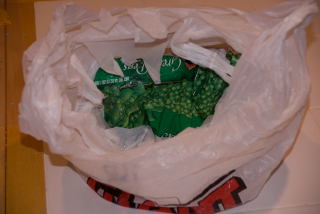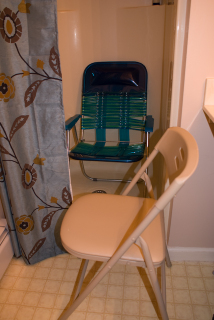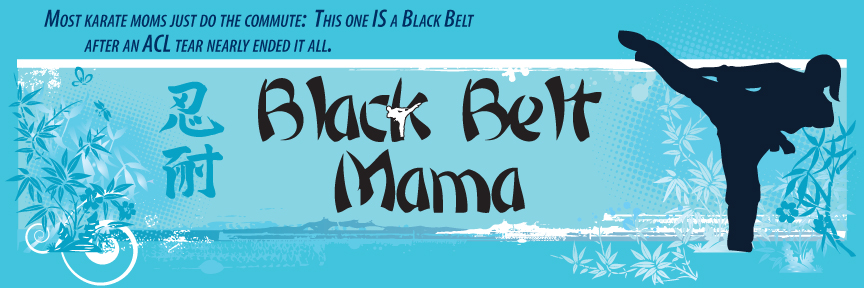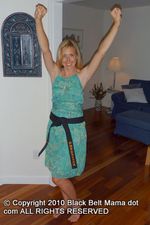December 30, 2007
ACL Surgery: Survival Essentials for the First Week
Hack Shaft is having ACL reconstruction surgery this week. In the interest of helping him and anyone else who might be about to go through this all around lovely experience, I thought I’d share with you the first week survival essentials.
- Giant bags of frozen peas:

My surgeon didn’t recommend using the cryo-cuff (which I hear is fabulous) because he said that ice works just as well. I’ll do you one better. Giant bags of peas in plastic grocery bags are key (and having someone who can break them out of huge chunks is also key). Mr. BBM spent much time slamming my frozen peas into the sidewalk, kitchen counter, etc. I wasn’t willing to go all Bruce Lee on them so that was his job. I’ve found in recent days that icing the underside of the knee along with the top feels awesome. Ice as often as you can, because it really feels good and helps the swelling disappear faster. I iced my knee at least six times a day the first week. - Elevation:

Pillow Set-up for first weekSmall pillows did not do the job for me. That could be because I have insanely long legs. However, king sized pillows and extra soft body pillows are essential. A body pillow folded in half at your foot with a king sized pillow or two on top, slanted down towards your butt is the best position I found to provide some relief. Top that with a bag of peas and that’s the closest you can get to heaven in the first few days after surgery.

Pillow Set-up for after the first week (The Sleeping Beauty pillow, propped on the inside of your foot, helps to keep your leg straight through the night so your ankle doesn’t droop over and get sore.
- Anti-inflammatories: I can not even BEGIN to tell you how much better I started feeling when I was told to add ibuprofen to my pain meds regime.
- Chair for the Shower with Arms:

My first shower was without a chair and it was agony. You have to be able to sit down. If you can also prop your leg up on the outside of the shower to put your leg on, you’ll be even happier. You must also have good help, because getting in and out of the shower is tricky. Here’s the process that I found works best: 1. Turn the water on and get it to the right temp BEFORE getting in the shower. 2. Slide your bottoms down and sit on the lawn chair (I should warn you that it’s going to suck even if you warm it up first), making sure to use the arm rests to evenly lower your weight down. 3. Prop your leg up on the outside the shower chair, and take your brace off. 4. Turn the water on. Prepare for the shock of your life even if it is the right temperature. 5. Shower as usual but for the first few times have someone stay nearby to make sure you feel o.k. and to direct the stream to the right spot so you don’t feel like you’re being water-boarded. 6. Have three towels handy: one for your hair (ladies), one for the body, and one for the leg and then floor. 7. Dry off the floor outside the shower thoroughly. Make sure your crutches are dry too. 8. Have someone help you stand up as you get out of the shower. I know that was hella boring, but you will SO thank me for it later. It took several days to streamline this process properly. - Remote Controls, Book, and Tissues: There is nothing more annoying and/or tear-producing than when something is just out of reach when you need it and you’re in pain. Make sure the things you need are always within reach. It will spare you much annoyance. Although I fully intended on reading through those early days, the pain is such that you can’t concentrate on what you’re reading. So, Tivo some good distracting programs in advance of your surgery or stock up on magazines that don’t require you to think too much. People Magazine anyone?
- Prune Juice, Colace, Senokot:

Meet your new best friend.Yep, you need them all. Since I only drank one glass of prune juice and I plan to never do so again, if you need some, I will totally mail it to you. Take that Colace and Senokot daily. Trust me on this one.
- Good Help: You will need someone to cook for you, bring you food, bring you drinks, bring you your bags of frozen peas, and even help you get dressed the first couple days unless you feel like playing horseshoes, with your underwear as the horseshoe and your foot as the stake. You will get really good at this eventually (I have anyway). If you can find someone who’s not going to get all annoyed at your demands and someone who will wake you in the early days every two-four hours to take pain meds/anti-inflammatories, you will be a much happier person. Thank you Mom, Mr. BBM, Big I and even Lil C (who was awesome at bringing me my crutches when someone had left them propped against the wall too far to reach when I really had to go to the bathroom). I also felt a lot more comfortable during those early days when someone stood in front of me and helped stabilize my crutches when I went up the stairs backwards.
- Pillows in the Car/Car Procedures: You have to sit in the back seat until you can bend your knee comfortably 90 degrees. Here’s how to do it without knocking yourself unconscious. 1. Use the crutches and back yourself up to the back seat. Have someone stand nearby to take your crutches and help you lower your head (police man style) so you don’t hit your head). 2. Sit down on the edge of the seat (using your hands to lower yourself down) and use your good leg to scoot yourself backwards until you are up against the opposite door. 3. IMPORTANT: Make sure your bad leg foot is clearly inside the vehicle and that it won’t get bumped by the closing door (Yes, I found out the hard way). 4. Have a pillow in the car and use it to prop up your leg. (This is key to your comfort the first week). 5. Getting out is done by sliding back across the seat. Use your good leg and arms to help scoot yourself along while using your muscles to hold your bad leg up in the air. Having someone to help stabilize your leg during those first few days is really helpful. Make sure they understand that they should support your leg at two spots. I found the lower back of the thigh and the lower calf to be the best support spots for a helper. Whatever you do, don’t let them grab your heel or ankle. Ouch.
- Sleeping: Unless you’re one of those strange people who enjoys sleeping on your back, sleeping after ACL surgery (especially once you’ve kicked the pain meds) is not at all fun. Having heavy covers over top of the knee was uncomfortable, so I found that leaving my injured leg on top of the usual covers with a lightweight fleece blanket on top of the injured leg helps a lot.
- Let it Out: This surgery is emotionally trying. It is a mental and physical test like no other I have ever experienced. There were days that I sobbed in the shower during that first week, and I needed to do that. I also wrote it all out because it felt better to get it out. It is OK to feel sorry for yourself. Just don’t spent too much time doing so, because it does get better (says the girl who showered by herself this weekend for the first time since before surgery and is currently bonding with her frozen peas once again).
Best of luck to you Hack Shaft, and to anyone else about to endure this challenge.























These are great pointers, BBM.
Hack Shaft, if the doctor offers you the cryo cuff, and if insurance will cover it, I’d go for the cuff because it does ice all around your knee, and it’s very easy to refresh the cold water yourself (though you will need someone else to occasionally replace the ice).
Excellent suggestions.
There are a lot of things that I wish I would have known before having ACL surgery.
I hope I never need this information, but what a lot of good info to have!
BBM,
Can’t thank you enough for spelling all these details out. I’m sure at least one came from BobSpar too–the shower chair bit!
We have plastic lawn chairs, but what’ll be tricky for me is that our bathroom has a shower/tub vs. just a shower stall. I have to un-bury a chair from the snow and make sure it will actually fit in the tub.
I may just avoid showering, and simply fill up the tub with enough water to reach comfortably. Don’t keep hair on my head, so don’t need to shampoo!
I think you should put all your valuable information in a book. Something like “Black Belt Mama’s Complete Guide To Knee Surgery”.
I do hope that I never have to use this survival information, but I’m grateful that you placed it here.. just in case.